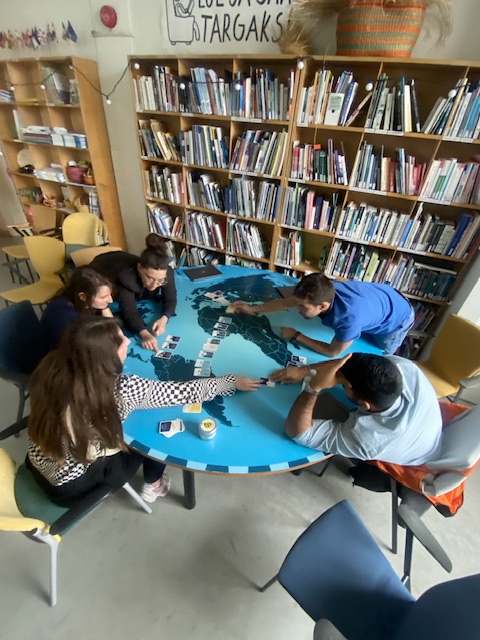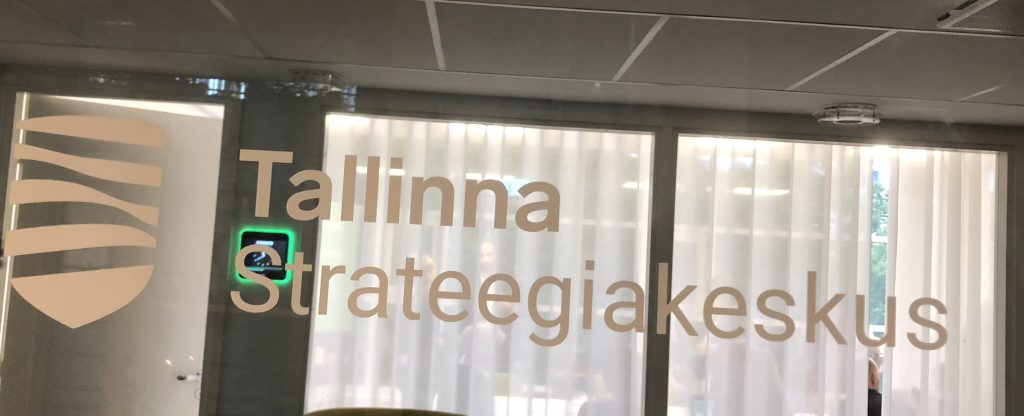After delivering astonishing musical performances at the karaoke bar last night, we rose early to prepare ourselves for a tightly scheduled day in Tallinn. Our first stop led us to a non-government organization called “Mondo” in the Creative City part of Tallinn. Inside the bright yellow building filled with hand-crafted art pieces, Melis and Maria gave us a warm welcome on a rainy day. The morning program started with a presentation by Melis, who introduced Mondo to us. It is a non-government organization, based in Estonia, operating in Estonia, as well as in twelve different countries across Africa, the Middle East, Eastern Europe and more. Within those countries, Mondo has partners, and they deliver their services through them. Mondo has five branches for their programs: Education, Subsistence, Digital Empowerment, Environment, Global Education and Awareness Raising. They especially focus on what they see as the most vulnerable groups of people, such as children, women, local partners and communities. After being introduced to the organization itself, Maria hosted the “gapminder” game for us, where we had to individually guess answers to questions related to climate change, poverty, pollution and more. Unfortunately, we were not too great at the game, but we did get answers to some questions, for example, how many people actually live under the poverty line or how much plastic actually ends up in the ocean. Once we collectively lost at the quiz, Maria gave us another presentation, this time about the global education system of Mondo. This part of their work consists of a focus on global competences, raising awareness about humanitarian aid, climate justice, peace, equality and much more. After that input, it was time for the next game, this time we were tasked to rank household activities, foods, vehicles, and electronics ranking from highest to lowest CO2 emissions.

In the afternoon, we arrived at the joint building of ministries for the third time this week. This time to visit the Ministry of Finance. Our visit started with a tour of the financial ministry offices as well as some communal spaces. We were rather surprised to see that the building had a built-in sauna for their employees. After the tour, it was time for our first presentation on the Ministry of Finance. During that presentation, we were shown a website called minuomavalitsus.ee. This website enables government officials and citizens to evaluate all Estonian local governments with an interactive map. The interface uses different color schemes to benchmark different services, like for example, mobility, waste management or basic education across different municipalities. We found this tool to be very nice because Switzerland currently does not offer a platform to rank local government services so far. This shows once again how the Estonian government is committed to transparency as well as accessibility of data.
After a coffee break, it was time to talk about Performance Based Budgeting (PBB) with Ms. Eneken Lipp, the Head of State Budget Development Department at the Estonian Ministry of Finance. The concept focuses on the allocation of resources based on strategic goals and not as usual based on the needs of a sector. Thus, the Estonian government follows the following process to implement the PBB: Establish targets and indicators to measure performance of different areas, link the budget to these targets and indicators, monitor and evaluate performance to correct course as early as possible in case of deviation from targets and indicators, ensure transparency regarding budget use, create incentives by linking the budget to performance.
